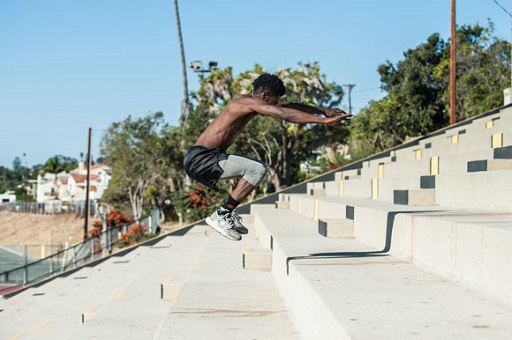3.1 Power training: physiology and mechanics
When a muscle is stretched rapidly, the neuromuscular system responds by initiating a concentric muscle contraction to prevent the muscle from being stretched too far and becoming damaged. This is known as the stretch-reflex system. In plyometrics, this means that if a rapid eccentric loading phase is performed before a concentric contraction, a greater and more powerful concentric muscle action will occur. This ‘pre-stretch’ action is known as the stretch shortening cycle and is explained further in Activity 4.
Activity 4 Plyometric mechanics and physiology
Watch Video 4, on the stretch-shortening cycle, at the link below. Focus on the section between the start and 02:55. Once you’ve watched Video 4, do the related tasks below.
Video 4: The stretch-shortening cycle [Tip: hold Ctrl and click a link to open it in a new tab. (Hide tip)]
1. Use the drop-down menus to select the correct missing word.
2. Put the three phases of the stretch-shortening cycle in the order they are performed.
Using the following two lists, match each numbered item with the correct letter.
-
Eccentric
-
Amortisation
-
Concentric
a.First
b.Third
c.Second
- 1 = a
- 2 = c
- 3 = b
Now that you have an understanding of how plyometric training works, in the next section you will investigate some examples of plyometric training.

